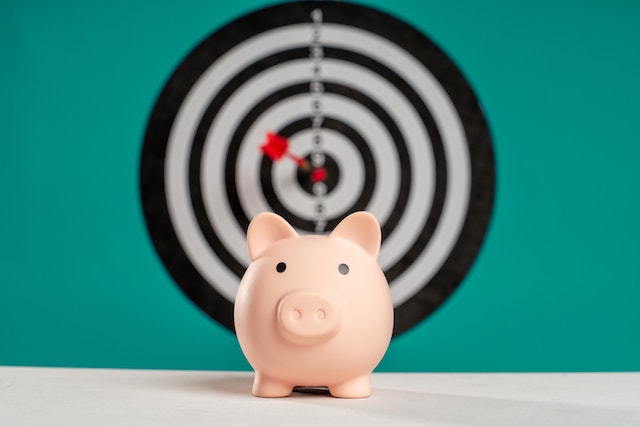Agents… Do You Have A Financial Plan?
- Stuck In The Working Remotely Vortex Versus A True Vacation? - July 24, 2024
- How Do I Hire Help as A Realtor©? - July 17, 2024
- Dos and Don’ts For Agent Email Marketing - July 10, 2024

Keeping money requires knowing how to set financial goals.
Let’s be real…
The reason why thousands of real estate agents got into the business was they want to make more money. And that’s why one of the things I am sharing is how to set financial goals. “I want to make more money” is not a goal; it’s a half-assed statement that’s going to keep your intentions vague and your bank account on the line of “safe.”
Do you want “safe” or do you want “comfortable and secure?” The sad fact is that 80% of all people will end up flat-broke when it comes time to retire. That doesn’t have to be you. That’s why in this week’s blog, I’ll show you just a bit of the type of information about how to set financial goals and put practices in place to achieve them. Once you know what you’re aiming for, you’re no longer shooting in the dark. So let’s dive right in and shed some light on your finances.
How to Set Financial Goals, Step 1: Find Your Cost of Living.
This one is very simple, but unfortunately, few real estate agents take the time to do this. All you have to do is add up the total costs of everything it takes to run your life:
Rent/mortgage + utilities
Marketing and business expenses
Car payment
Food and medications
Fun and entertainment
Taxes
Savings
Add up any payments or regular expenses you can think of, then tack on an extra $1,000 because who knows what could happen in life. You could get sick, or your car could break down or you could end up spending a little too much on dinner. This is your Survival Goal. It’s what you need to make consistently every single month just to stay above water. It will not give you a better life and it will not allow you to ever retire.
How to Set Financial Goals, Step 2: Your Good Life + Dream Goals (Phase 1)
Let’s take it up a step. What would it look like if you were closing a few more deals and living a realistically better life? Think about that next-step-up home you want to own. How much does it cost? What about a more desirable car? What would your vacations look like? Get in a relaxed mode and visualize it. Then get on the computer and look up the actual prices. Add them up. Do everything the same as you did with finding your survival goal, then tack on an additional $3,000. This is your Good Life Goal. Now take it even a step further. If everything went perfectly for you in the next 12 months and the money was flowing in, what would your business look like? How much would you be spending on marketing with all your new lead gen sources? Where would you be living? This is your dream life, and once you know how much it costs, you have your Dream Goal.
How to Set Financial Goals, Step 3: Adjust for the Future.
It’d be so nice and easy if we could just stop at step 2 and live in dreamland, wouldn’t it? Unfortunately, that’s how you become a member of the 80% of agents who will be working until they die. What you need to do now is find the REAL numbers it will take to live those life goals now and in the future. Do a 10-year forecast of your life, imagining that at the end of these 10 years, you’re going to step away from your business and just live. Write down all three goals, then multiply each by 12 (to bring them to a yearly amount), then multiply them by 10 (for ten years). Let’s say your Good Life Goal is $125,000 a year. Over 10 years, that means you’ll have made $1,250,000. Now let’s start cutting this down.
35% goes to taxes
25% to running your business
25% to running your home
Leaving 15% that you either saved or invested
Going by this, at the end of 10 years, you can now comfortably live your same lifestyle for a remarkable ONE YEAR and some months! Pretty scary huh? That’s why you need to start thinking about these things now. This step is not over until you find a 10-year number that you’re comfortable with. You either need to start cutting down on some of the expenses or raise the number entirely.
How to Set Financial Goals, Step 4: Choose Your Who and Why.
I’m not perfect; I’m human, just like everyone else. And that means I’ve found that I’m capable of breaking the promises that I make to myself. But what I’ve also noticed is that I NEVER break a promise that I make to others – especially those I care about. Most people won’t tirelessly grind day-in and day-out just for themselves, but they will do it for their spouse, their kids, their parents, or their coach. You need accountability. I need accountability. We all need it. It’s the cornerstone of greatness. Find yours. Don’t skip this step.
How to Set Financial Goals, Step 5: Decide Where Your Money Will Flow.
We’ve already talked about breaking your money down into categories. If all that money stays in one account, then those are just invisible boxes that will stay in your head and soon fade away to nothing. I sincerely hope that you’re not depositing your checks into a personal checking account. If you are, stop that now and open a business account. I’m not your financial advisor, so the type of account you choose to open is between you and them. But once you have that business account open, you need to start opening a few more accounts and moving the money appropriately right away into each:
Tax account
Home account
Fun account
Savings account
Investment account (Don’t make the mistake of not buying enough of your own product)
Business expenses account
How to Set Financial Goals, Step 6: Make a Commitment.
You’ve decided what you want, refined it, chosen a strategy to get you there, set up accountability, and put your banking system in order. Now I want you to make a written and verbal promise to those holding you accountable that says you will follow this plan and achieve these goals by doing everything you possibly can. It’s time to become the best possible version of yourself because now your ass is on the line.
Strength and courage,
Wade


FIRST 2 CHAPTERS FREE
My book, The Lazy Realtor, is available in Paperback or Kindle format, on Amazon. You can preview it here and I’ll even include these bonus items:

Phone: (250) 212-8220 | Wade@agentsboost.com
